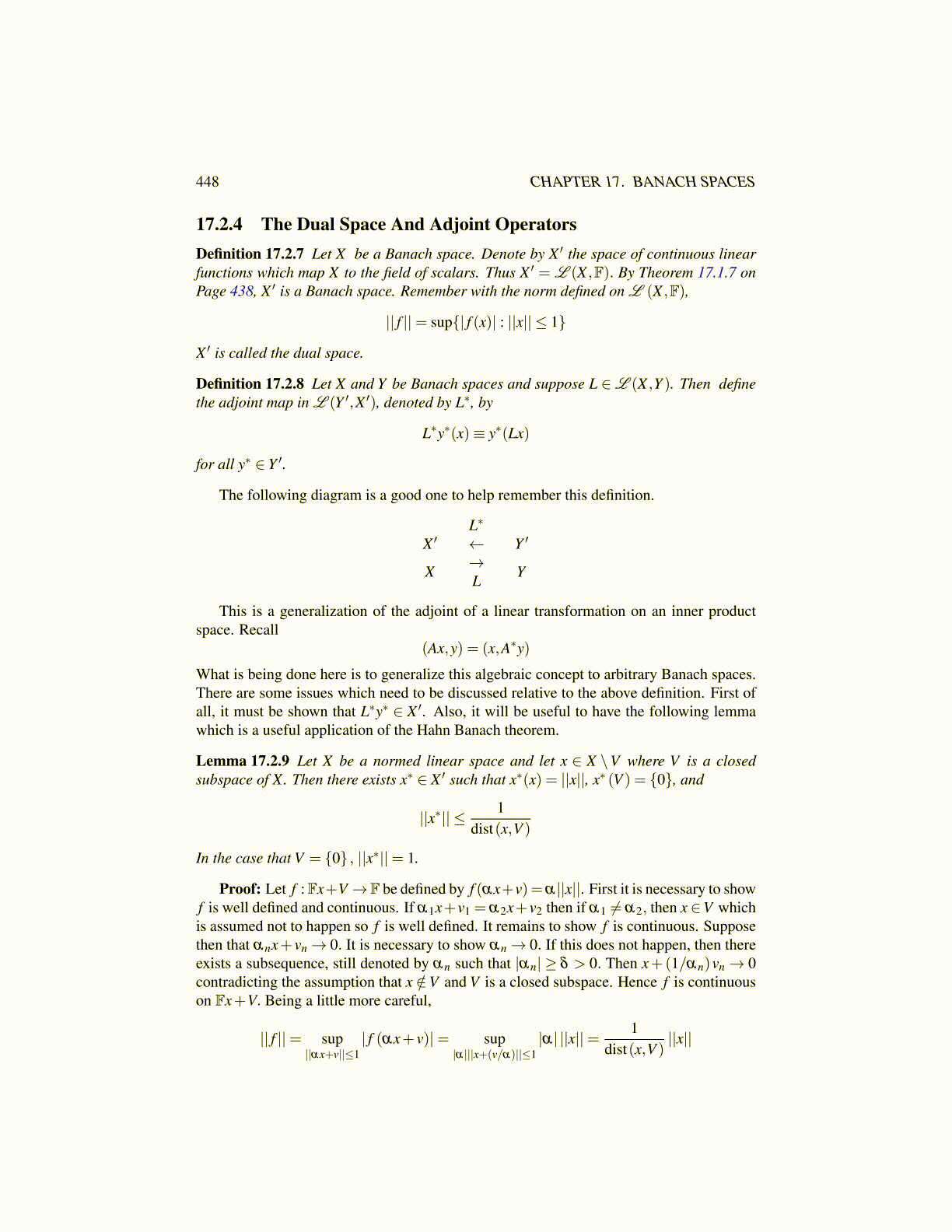
448 CHAPTER 17. BANACH SPACES
17.2.4 The Dual Space And Adjoint OperatorsDefinition 17.2.7 Let X be a Banach space. Denote by X ′ the space of continuous linearfunctions which map X to the field of scalars. Thus X ′ = L (X ,F). By Theorem 17.1.7 onPage 438, X ′ is a Banach space. Remember with the norm defined on L (X ,F),
|| f ||= sup{| f (x)| : ||x|| ≤ 1}
X ′ is called the dual space.
Definition 17.2.8 Let X and Y be Banach spaces and suppose L ∈L (X ,Y ). Then definethe adjoint map in L (Y ′,X ′), denoted by L∗, by
L∗y∗(x)≡ y∗(Lx)
for all y∗ ∈ Y ′.
The following diagram is a good one to help remember this definition.
X ′L∗
← Y ′
X→L
Y
This is a generalization of the adjoint of a linear transformation on an inner productspace. Recall
(Ax,y) = (x,A∗y)
What is being done here is to generalize this algebraic concept to arbitrary Banach spaces.There are some issues which need to be discussed relative to the above definition. First ofall, it must be shown that L∗y∗ ∈ X ′. Also, it will be useful to have the following lemmawhich is a useful application of the Hahn Banach theorem.
Lemma 17.2.9 Let X be a normed linear space and let x ∈ X \V where V is a closedsubspace of X. Then there exists x∗ ∈ X ′ such that x∗(x) = ||x||, x∗ (V ) = {0}, and
||x∗|| ≤ 1dist(x,V )
In the case that V = {0} , ||x∗||= 1.
Proof: Let f :Fx+V→F be defined by f (αx+v)=α||x||. First it is necessary to showf is well defined and continuous. If α1x+v1 = α2x+v2 then if α1 ̸= α2, then x ∈V whichis assumed not to happen so f is well defined. It remains to show f is continuous. Supposethen that αnx+ vn→ 0. It is necessary to show αn→ 0. If this does not happen, then thereexists a subsequence, still denoted by αn such that |αn| ≥ δ > 0. Then x+(1/αn)vn→ 0contradicting the assumption that x /∈V and V is a closed subspace. Hence f is continuouson Fx+V. Being a little more careful,
|| f ||= sup||αx+v||≤1
| f (αx+ v)|= sup|α|||x+(v/α)||≤1
|α| ||x||= 1dist(x,V )
||x||